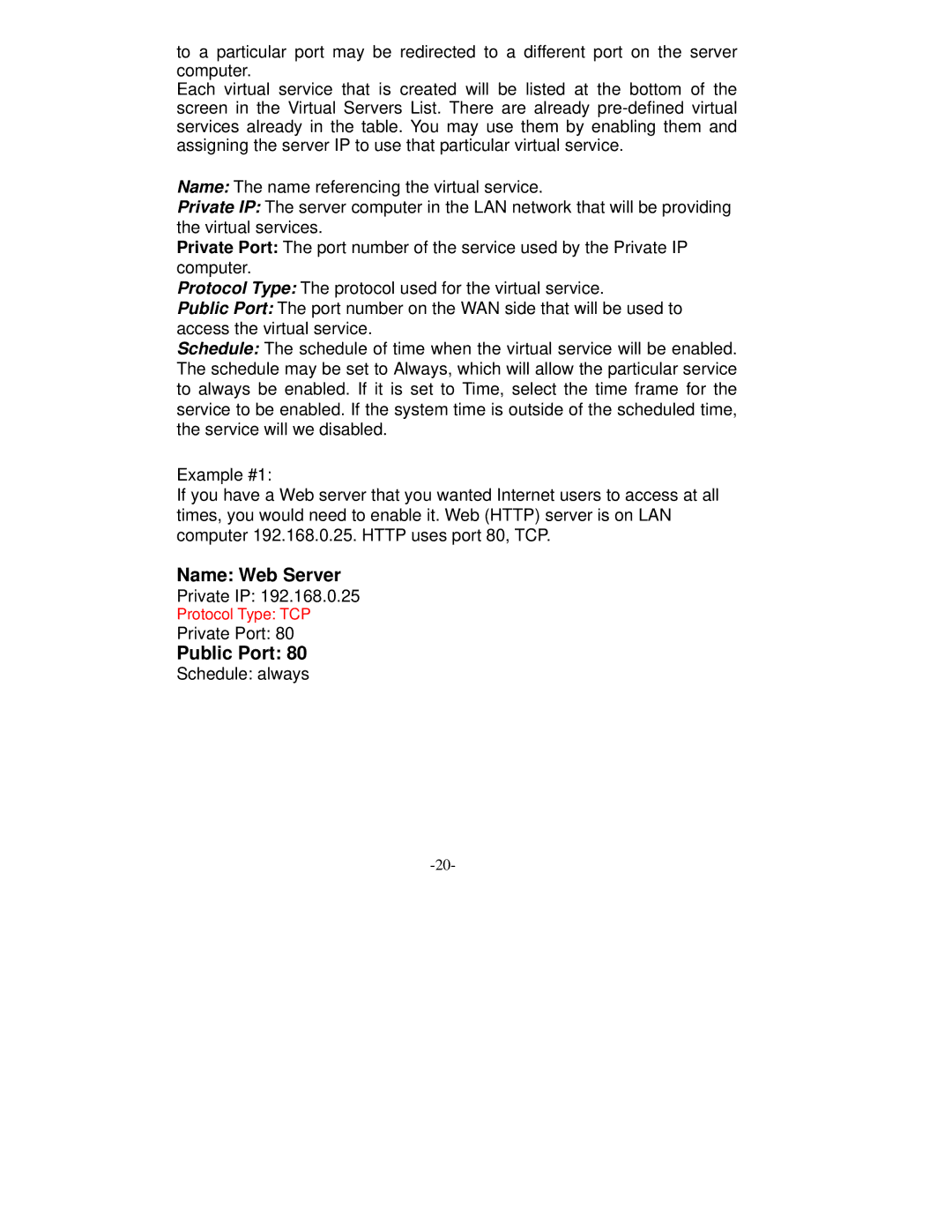to a particular port may be redirected to a different port on the server computer.
Each virtual service that is created will be listed at the bottom of the screen in the Virtual Servers List. There are already
Name: The name referencing the virtual service.
Private IP: The server computer in the LAN network that will be providing the virtual services.
Private Port: The port number of the service used by the Private IP computer.
Protocol Type: The protocol used for the virtual service.
Public Port: The port number on the WAN side that will be used to access the virtual service.
Schedule: The schedule of time when the virtual service will be enabled. The schedule may be set to Always, which will allow the particular service to always be enabled. If it is set to Time, select the time frame for the service to be enabled. If the system time is outside of the scheduled time, the service will we disabled.
Example #1:
If you have a Web server that you wanted Internet users to access at all times, you would need to enable it. Web (HTTP) server is on LAN computer 192.168.0.25. HTTP uses port 80, TCP.
Name: Web Server
Private IP: 192.168.0.25
Protocol Type: TCP
Private Port: 80
Public Port: 80
Schedule: always
